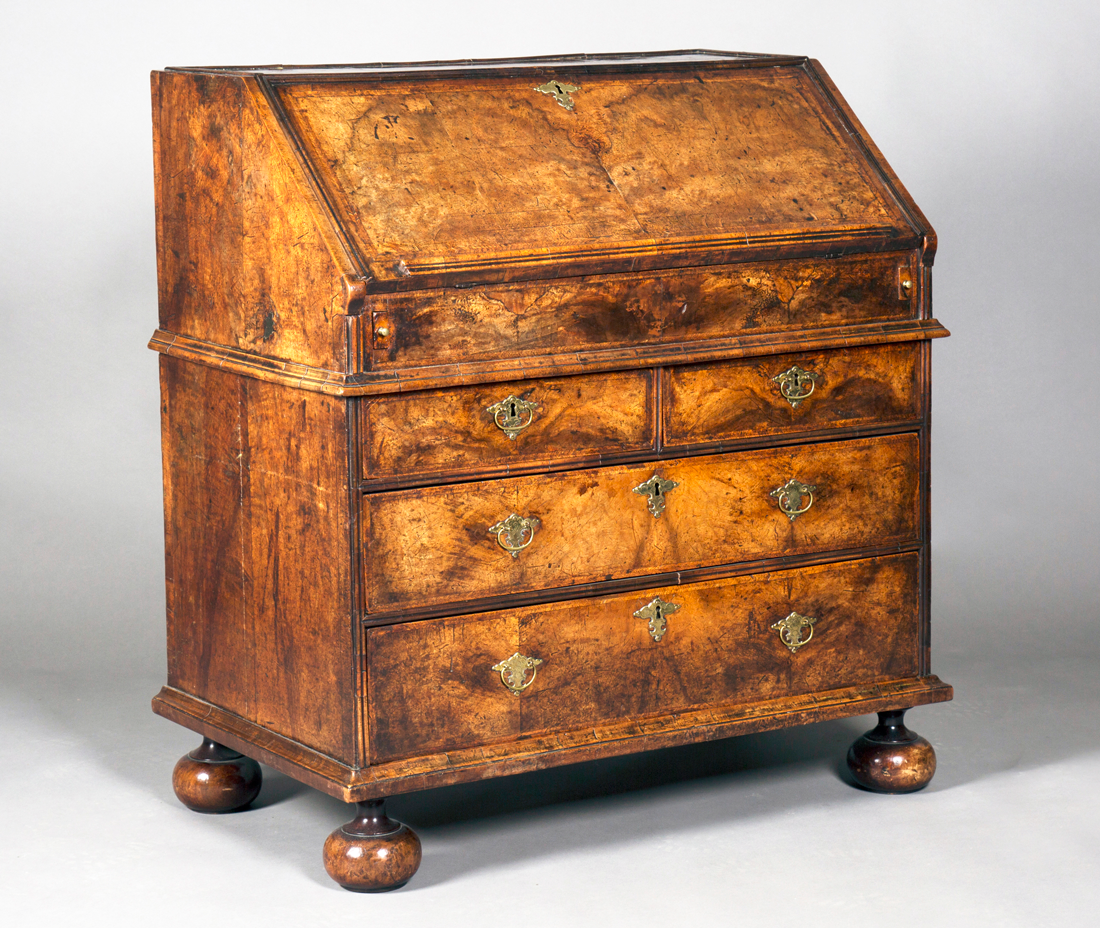
By the time of Queen Anne’s (1685-1714) accession to the British throne in 1702 the Dutch influence on furniture design had been fully assimilated and English furniture set off on its own course of development. The Queen Anne style would influence tastes in Europe and America. Queen Anne was the last of the Stuarts. The second daughter of James II by his first wife Anne Hyde. She was brought up as a protestant and has been described as shy, conscientious, homely and small.
The needlework panel of the period is filled with metaphors. Anne is depicted standing in a garden wearing a crown whilst holding a sceptre and an orb as symbols of her office. In the Bible gardens are places of divine encounter, sustenance, beauty and shelter, qualities which are being attributed to the Queen. The cherubim symbolise the glory, majesty, power, and divine protection of the Queen. The cherubim are also present to inspire fear, reverence, respect and awe towards her as they remind the viewer that God himself is the King of kings.

Provincial Queen Anne furniture is designed and adapted to fit the needs and comfort of the human form. For example chairs became lower with serpentine splats to mirror the backs of the sitter. Case furniture too became more graceful and delicate. Hand cut walnut veneers and solid mahogany became popular.
There is a delight to be found in the hand cut veneers of the Queen Anne bureau illustrated. As you open it the fall flap hinges downwards to form a writing surface. It reveals pigeonholes, drawers, a cupboard and secret compartments. The sloping sides gather you as you sit at it whether reading, working or just taking time to imagine.
Light seems to dance on its surface, reflected softly with an extraordinary depth and richness. The marks of life and age add to the sense of joy. It is part of our human purpose to make beauty in the world and it is surely right that we should celebrate it.
It is the subtle, imperceptible undulations of the hand cut veneer which causes this exquisite, generous effect. And it contrasts with later machine made pieces where the surface is perfect but hard to the eye lacking life. Here then is the perfect example of an often forgotten truth – that there is perfection in the imperfection of our lives.
These two exceptional Queen Anne pieces sold at Toovey’s for £3000 and £2200 respectively. However, apart from the finest pieces good quality 18th century English furniture has never been such wonderful value. You can buy Georgian dining tables, chairs, chests of drawers and bureaus for a few hundred pounds. These pieces allow you to have rich, comfortable, eclectic interiors in the English Country House taste whilst making no demands on our world’s finite and precious resources. Young people in their 20s and 30s are actively buying these pieces calling it the New Minimalism. They intuitively understand that there is perfection in the imperfection of a handmade object which perhaps is a hopeful metaphor for us as people too.